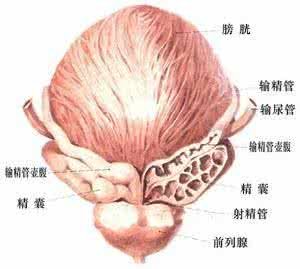What are the symptoms of watershed cerebral infarction?
summary
Watershed infarction, or brain watershed infarction (WI), refers to the cerebral infarction that occurs at the junction of the two main arteries of the brain, mostly at the junction of the larger arteries of the brain. It is also called limbic zone cerebral infarction because it is mainly located in the limbic zone brain tissue between the large cortical arteries and the small arteries in the basal ganglia. What are the symptoms of watershed cerebral infarction? Let's talk about it now.
What are the symptoms of watershed cerebral infarction?
Anterior watershed cerebral infarction pre cortical type refers to the superficial area between the anterior cerebral artery and the middle cerebral artery. It is mainly manifested as limb paralysis, lingual paralysis is rare, and half of the patients have sensory abnormalities. The patients with lesions in the dominant hemisphere were mainly accompanied with cortical motor aphasia and intellectual impairment, while the patients with lesions in the non dominant hemisphere often had emotional disorders.

Postcortical type of post watershed cerebral infarction refers to the superficial layer of infarction zone between middle cerebral artery and posterior cerebral artery, which is often characterized by hemianopia and macular avoidance. In addition, common cortical sensory disorders, mild hemiplegia or no dominant hemisphere involvement, manifested as cortical sensory aphasia, occasional apraxia, nearly half of the patients can have emotional apathy, also can have transcortical sensory aphasia - emotional apathy - simple aphasia. Contralateral spatial neglect and desensitization may occur in non dominant hemisphere lesions.

Subcortical watershed cerebral infarction, namely subcortical superior type, refers to the infarction located between the deep and superficial branches of the middle cerebral artery, which mostly affects the white matter of the lateral ventricle and the basal ganglia. The fibers in the basal ganglia are more concentrated. Hemiplegia and hemiparesthesia often occur in this infarction, and the dominant hemisphere lesions often cause speech disorders.

matters needing attention
The treatment of hypertension, atherosclerosis, hyperlipidemia, diabetes, heart disease and carotid stenosis should be strengthened. Pay attention to change bad habits, moderate sports activities. Avoid bad habits such as smoking, drinking and overeating. We should have a low-fat, low calorie and low salt diet, and have enough high-quality protein, vitamins, cellulose and trace elements. When the temperature changes suddenly, the middle-aged and elderly, especially those with weak and weak diseases, are mostly ill adapted to illness. Especially in severe cold and midsummer, the old people's adaptability is poor, their immunity is reduced, their incidence rate and mortality rate are higher than normal.













